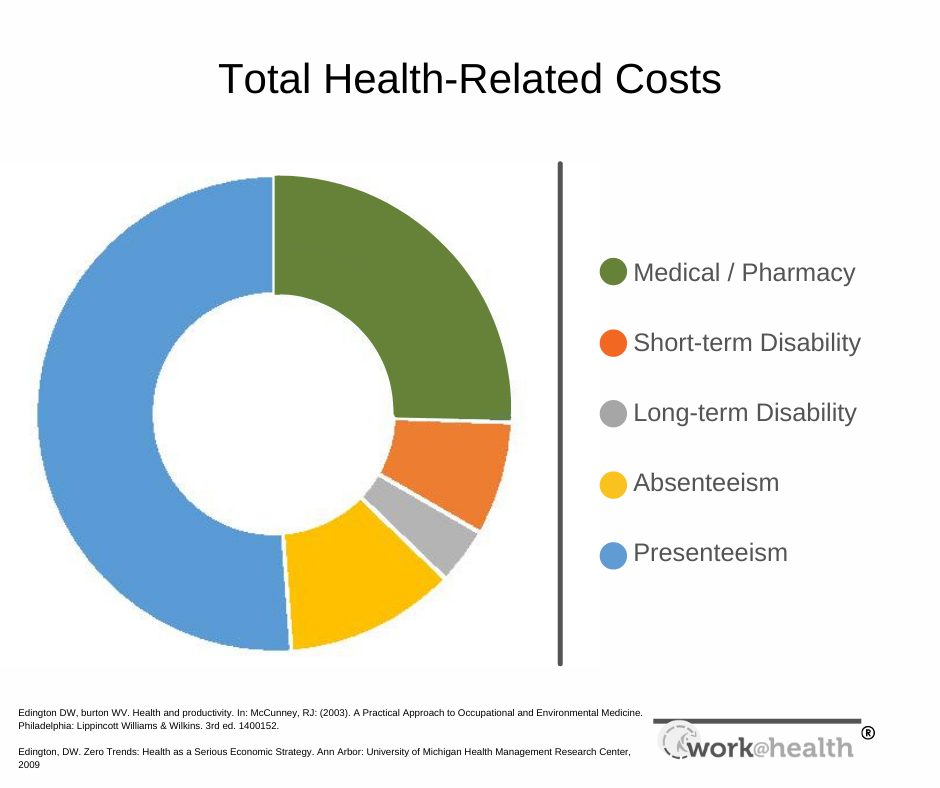
You know wellness matters. But how do you convince your boss?
Wouldn’t it be nice if employers determined happier, healthier staff was justification enough for a wellness program? Sometimes you’re lucky and that’s the case. Sometimes you may need to do a little convincing to get the support you need. Here we’ll review the three main arguments for workplace wellness, and help you form the perfect pitch to your boss.
Argument 1: Health-Cost Management
To get leadership on board, sometimes it comes down to the almighty dollar. And a lot of dollars can be saved by both the employer and the employee when their health is improved. Approximately 20% of all health care costs go toward modifiable health risks. Examples of modifiable health risks include:
- physical inactivity
- unhealthy eating
- tobacco use
- excessive alcohol use
This means that 20% of those costs could have been avoided with healthier lifestyle choices related these examples. Not to mention, healthier employers also use less sick days and are more productive. This brings us to argument two.
Employers can implement and support changes in the workplace that make it easier for employees to choose healthier options in any of these areas. Examples could include tobacco cessation programs, lunch-n-learns, or staff walking groups.
Argument 2: Productivity
Healthy employees are more productive, and guess what. That saves employers money too. Not to mention, it also leads to a higher quality and quantity of output at work.
There are some easy ways we can gauge productivity at work: how many absent days, disability claims, workers’ comp claims? However, there’s another important piece to productivity that may be harder to see, but is so crucial to address: presenteeism. Presenteeism is the practice of employees coming to work when they shouldn’t, or being at work but not able to fully engage.
True or False?
TRUE!
For example, an employee with chronic migraines might still come to work, but if a migraine hits, they might loose hours of productivity. A less extreme but more common example could simply be an employee who’s sat at their desk too long and are becoming distracted. If the work culture makes them feel like they’ll be judged from getting up from their desk, they might continue to sit their unproductively. In reality though, a short walk around the parking lot might have been all they needed to reenergize.
Workplace wellness programs can address things like stress, activity, nutrition and sleep. These are just a few key areas that can help decrease presenteeism and absenteeism resulting in those higher productivity levels.

Argument 3: The Great-Place-To-Work Reputation
The results of a good workplace wellness program extends beyond the individual health of the employees. It can also transform workplace culture. Some employers might relate workplace culture to the phrase “human capital management.”
Human capital management might sound a little cold, but it simply refers to how an employer cares for their employees from hiring process all the way through employee retention strategies.
More and more, workplace culture is becoming a priority to potential hires. When an employer has a solid wellness program, they can expect to better attract new hires, retain talent, and improve morale. The workplace becomes a place where employees are content or even enjoy coming to.
Can you think of ways good human capital management also ties into the health-cost management argument?

Make Your Perfect Pitch
Now you know some of they key motivators for most employers to promote wellness. Next, it’s time to tailor these to fit your own workplace leadership’s ideals. These steps can help you create a solid pitch for your employer.
First, ask yourself, “What motivators are most important to my leadership?” Consider the three arguments we reviewed above. You may even think of other compelling reasons specific to your workplace. Use the key arguments you’ve identified to start forming your pitch.
Your pitch to upper management should align with your workplace’s:
- values
- beliefs
- norms
Create a pitch by addressing each of the following in a concise way:
- What’s the problem?
- What’s the vision?
- What’s the opportunity?
- What’s your ask?
Now, even the “perfect pitch” may get some pushback from an employer. Take time to anticipate what questions, concerns or hesitations your leadership might have. Do your research and be prepared with more information to support your pitch.
Remember, workplace wellness programs don’t happen overnight. Be ready to start small and build on your program. As you gain more interest from fellow employees, you’ll certainly see support from leadership begin to grow as well.

